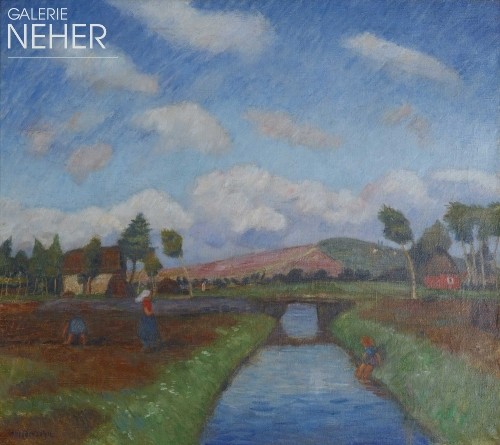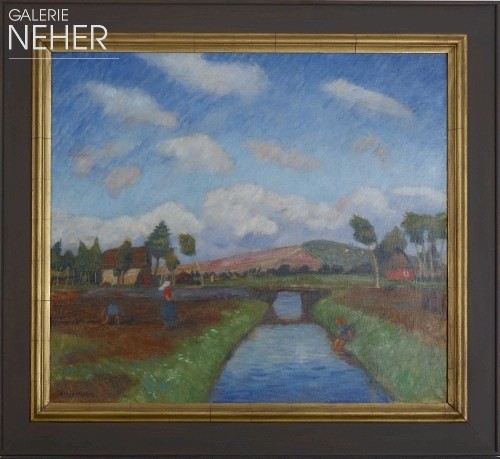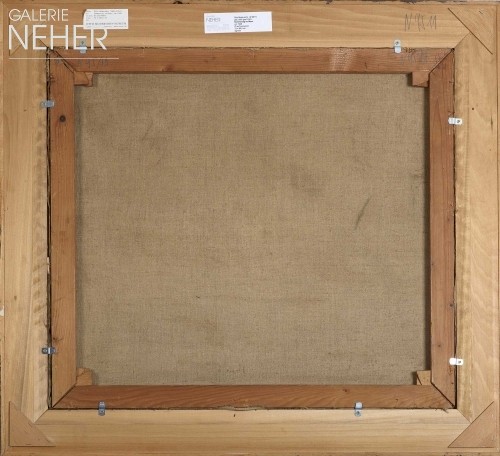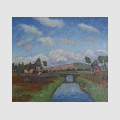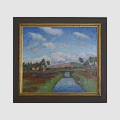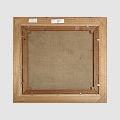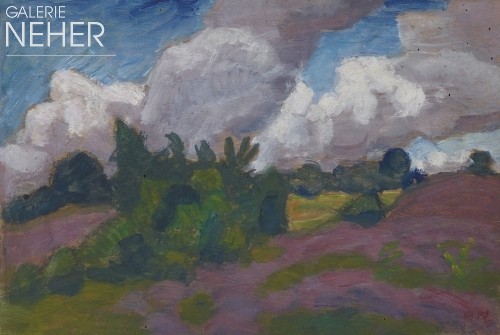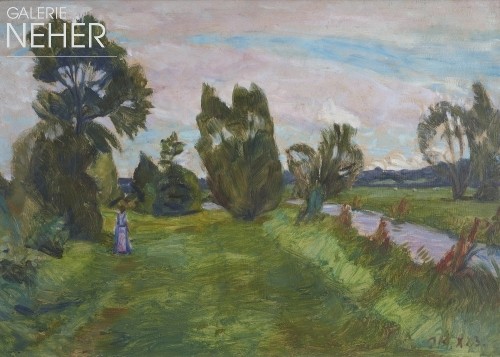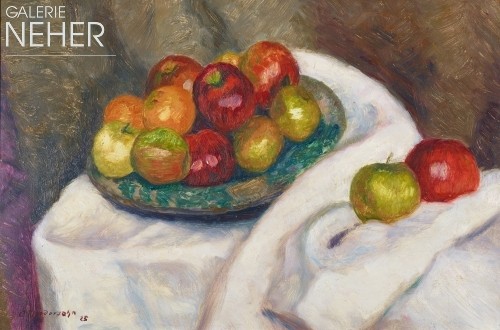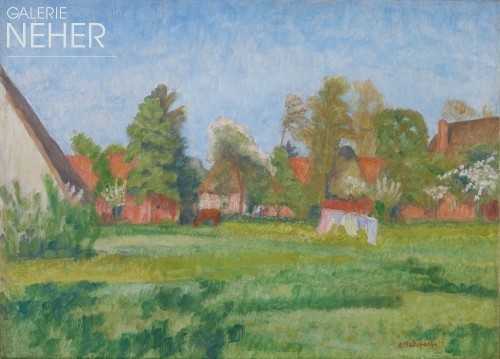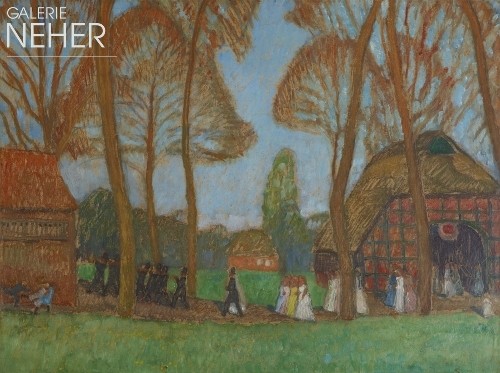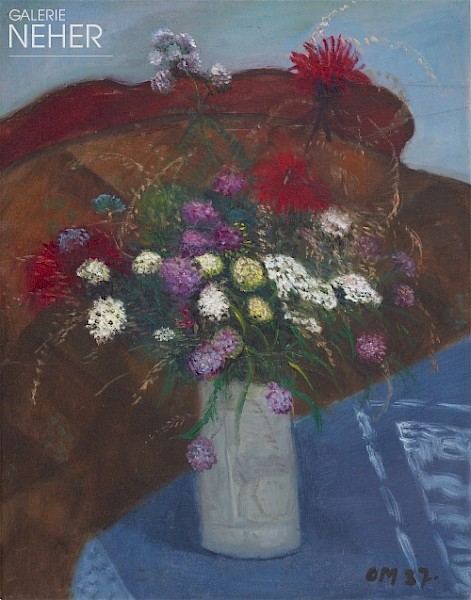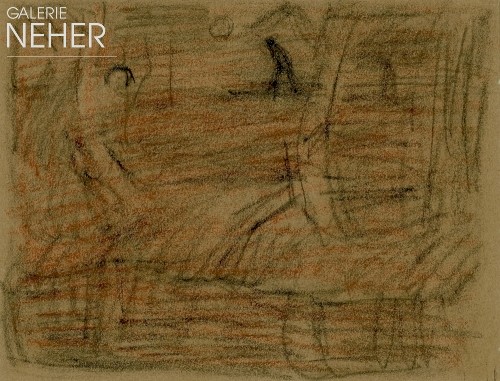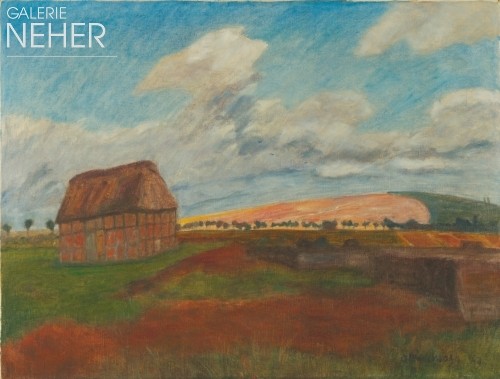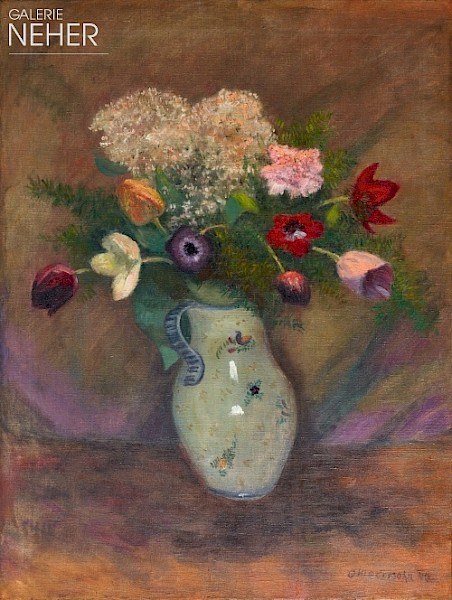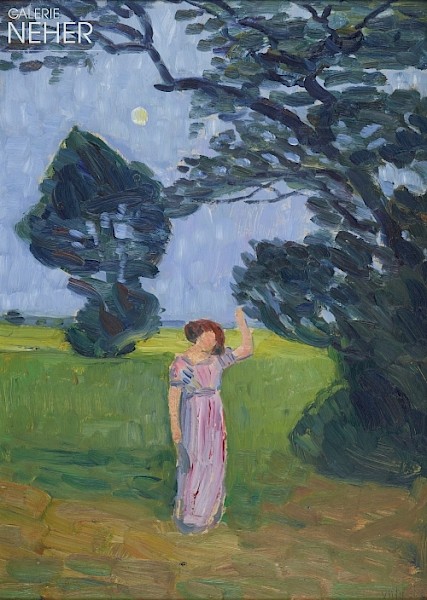About the work
Following the sudden death of his second wife, the painter Paula Modersohn-Becker, in 1907, Otto Modersohn moved with his third wife Louise Modersohn-Breling from Worpswede to the village of Fischerhude around 20 km away in July 1908 and found his new home here until his death in 1943. In addition to the many study trips that the Modersohns undertook to the Allgäu from 1927 to 1929, the Teufelsmoor and its characteristic landscape with the Weyerberg nonetheless remained an important motif for his work. The "Buchenhof" shown here is the villa that the painter colleague of the Modersohns, Hans am Ende, had built for himself and his wife at the end of 1895 - in the direct vicinity of Heinrich Vogeler’s "Barkenhof". Fascinating here is the flat unity of the painting: "I want to construct the painting from coloured forms and areas, divide up the pictorial space. […] A painting must form a unit; one must completely overcome the material; all things must have something in common, like a fabric.”
(Otto Modersohn, Tagebücher 1921 - 1928, 10 May 1921)
The work also convinces in particular through the compositional clarity. The moor canal runs straight toward the Weyerberg in the background, which rises as a 54.4-metre-high sand deposit above the otherwise nearly flat Teufelsmoor. Modersohn had already begun to look more closely at the work of Paul Cézanne by this time. This led in his own work to a gradual turning away from representationally painted nature toward a more symbolic representation. This reproduces the atmosphere of the real landscape even more impressively here than a naturalistic imitation.
Text authored and provided by Dr Andrea Fink, art historian
The art historian, curator and freelance publicist Andrea Fink studied art history, cultural studies and humanities, modern history and philosophy in Bochum and Vienna. Doctorate in 2007 on the work of the Scottish artist Ian Hamilton Finlay. As a freelance curator and art consultant, her clients include, among others, the Kunstverein (art association) Ahlen, Kunstverein Soest, Wella Museum, Museum am Ostwall Dortmund, ThyssenKrupp AG, Kulturstiftung Ruhr, Osthaus Museum Hagen, Franz Haniel GmbH, Kunsthalle Krems, Austria.
